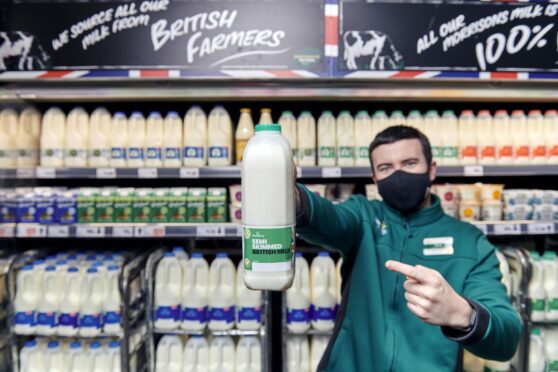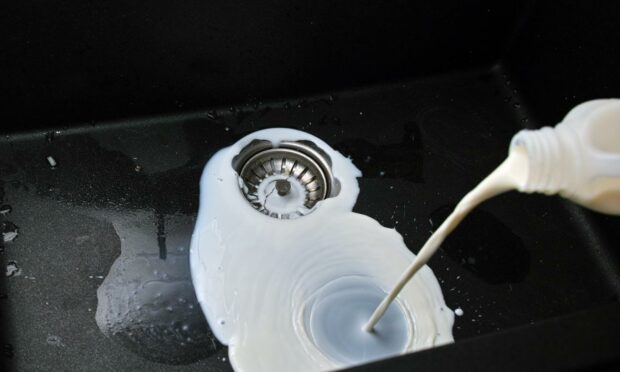Farm leaders have praised Morrisons over its plans to ditch “use by” dates on most of its milk in a bid to reduce food waste.
The Royal Association of British Dairy Farmers (RABDF) and farming union NFU Scotland (NFUS) both welcomed the move and said it was good news for the dairy industry.
RABDF chairman Peter Alvis said: “A lot of effort goes into milk production, and anything we can do to minimise its waste is welcomed.
“In the UK, we are only about 77% self-sufficient in milk production, so reducing waste will help some way to improve food security and reducing food miles.”
Citing figures from recycling charity WRAP which suggest 490 million pints of milk are thrown away in the UK every year, Mr Alvis said reducing this wastage would also help save water.
“It takes eight litres of water to produce one litre of milk or 158 litres of tap water to produce one litre of almond drink,” added Mr Alvis.
“So, if we can prevent 490 million pints from going down the drain, that equates to circa 2 billion litres of water saved.”
He called on other retailers to follow in Morrisons‘ footsteps and introduce “best before” dates to milk and dairy products, but said consumers would need to be told what the new labelling meant.
“Just because something it passed its Best Before date, it doesn’t mean it needs to be binned,” added Mr Alvis.
NFUS milk committee chairman and Stranraer dairy farmer Gary Mitchell said the move to “best before” labelling would further improve the industry’s green credentials.
He said: “The whole dairy industry, from farm gate to shop shelf, continues to make huge strides in improving efficiency, reducing emissions, and cutting out food waste.
“Shifting from ‘use by’ to ‘best before’ on fresh milk might further improve our green credentials.”
However he warned of lower than average milk volumes being produced on British farms in the year ahead, due to “significantly higher costs” for feed, fertiliser and fuel and said: “With significant competition for milk, all retailers will be facing a challenge to ensure continuity of supply of fresh milk in twelve months ahead.”

